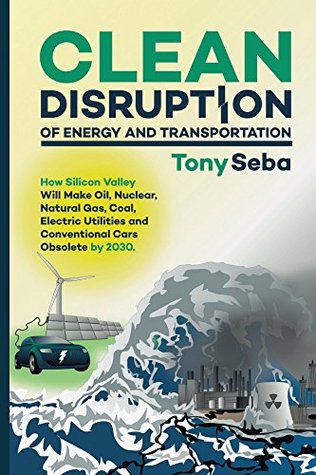More on this book
Community
Kindle Notes & Highlights
by
Tony Seba
The new architecture is about everyone financing everyone to build smaller, distributed power plants everywhere.
The first wave of disruption of the century-old automotive industry is well underway with electric vehicles. The second disruptive wave, the self-driving car, will hit before the first wave is finished crashing. Transportation will never be the same again.
The disruption of energy and transportation as we know it today is being led by three main sets of technology-based products: 1. Solar 2. Electric vehicles 3. Autonomous (self-driving) cars
As the installed cost of solar keeps decreasing, the cost of solar electricity will approximate the cost of capital. This is good news because the cost of capital for the U.S. government is less than 1 percent. The cost of capital in Japan has been essentially zero for more than a decade.
Centralized power generation has a 7 ¢/kWh cost disadvantage compared to distributed generation. In other words, if your solar rooftop can generate energy at 10 ¢/kWh, your centralized utility power plant, to offer you a better deal, would have to generate power at 2 ¢/kWh. No resource-based centralized power producer can generate at that cost, no matter how subsidized it is. Not gas, not coal, and certainly not nuclear or diesel.
Can Detroit design an internal combustion engine that is as energy efficient as the electric motor? In a word: no. The laws of thermodynamics prevent this from happening. Notice what technologies Detroit is using in order to make gasoline cars more energy efficient: batteries and electric motors!
Globally 1.24 million people died of traffic-related accidents in 2010, according to the World Health Organization.260 Almost half of those deaths were pedestrians, cyclists, or bikers.261 Additionally, 20 to 50 million people suffer non-fatal injuries because of traffic accidents annually.
Autonomous cars will soon save more than one million lives a year. This alone is potentially revolutionary.
Using both ACC and inter-vehicle communications can boost highway capacity by an astonishing 273 percent,


